 Operation and Maintenance
Operation and Maintenance
 Linux Operation and Maintenance
Linux Operation and Maintenance
 What are linux commands and dos commands
What are linux commands and dos commands
What are linux commands and dos commands
Linux commands are commands for managing Linux systems. There are two types of them in the system: 1. Built-in Shell commands, which are recognized by the shell program and run inside the shell program. They are executed when the system starts. Transferred into the memory, it is resident in the memory; 2. External commands (file system commands) are programs outside the bash shell. DOS command refers to the command of DOS operating system, which is a kind of disk-oriented operation command, mainly including directory operation commands, disk operation commands, file operation commands and other commands.

The operating environment of this tutorial: linux7.3&&windows10 system, Dell G3 computer.
What is the linux command?
The linux command is a command for managing the Linux system. For the Linux system, whether it is the central processor, memory, disk drive, keyboard, mouse, or user, they are all files. The commands for Linux system management are the core of its normal operation, similar to the previous DOS commands.
There are two types of Linux commands in the system: built-in Shell commands (built-in commands) and Linux commands (external commands).
The built-in commands are transferred into the memory when the system starts. They are resident in the memory, so the execution efficiency is high.
External commands are software functions of the system, which are read from the hard disk into the memory when the user needs them.
1. External commands
External commands are also called file system commands. They are programs other than the bash shell. They are not part of the shell. part. External commands are typically located in /bin, /usr/bin, /sbin, or /usr/sbin. External commands are the utility part of the Linux system. Because the functions of utility programs are usually relatively powerful, the amount of programs they contain will also be large. When the system is loaded, they are not loaded into the memory together with the system, but when needed. Only then will it be called into memory.
Usually the entity of the external command is not included in the shell, but its command execution process is controlled by the shell program. The shell program manages the path search, loading and storage of external command execution, and controls the execution of commands. External commands are installed additionally outside of bash, usually placed in /bin, /usr/bin, /sbin, /usr/sbin... etc. You can use the "echo
$PATH" command to view the storage path of external commands, such as: ls, vi, etc.
2. Built-in commands
The internal commands are actually part of the shell program, which contain some relatively simple Linux system commands, which are recognized by the shell program. And complete the operation inside the shell program. Usually when the Linux system is loaded and run, the shell is loaded and resides in the system memory.
Internal commands are written in the bash source code, and their execution speed is faster than external commands, because parsing the internal command shell does not require the creation of a child process. For example: exit, history, cd, echo, etc.
Explanation
The pwd command is a special command with two versions, one is a built-in command and the other is an external command.
3. Distinguish between built-in commands and external commands
Syntax
type command
Case
We use the type command to check the cd command is Internal command or external command, the specific command is as follows:
type cd
After running, the terminal output is as follows:

We see that the output cd is a built-in command , Now, we use the type command again to check whether the ps command is a built-in command or an external command. The specific command is as follows:
type ps
After running, the terminal output is as follows:

We see that the location of the ps command is output, that is, it indicates that the ps command is an external command.
#What is the dos command?
DOS command, a computer term, refers to the command of the DOS operating system, which is a disk-oriented operation command. , mainly including directory operation commands, disk operation commands, file operation commands and other commands.
Commonly used operating systems include windows 10, windows 7, etc., all of which have graphical interfaces. The operating system people used before these systems was DOS.
The dos command is actually similar to the function we usually use the mouse to click. The earliest computers did not have a mouse and a graphical interface, and they were all executed by entering commands. The graphical interface is used because the operation is more intuitive and concise, and it is popularized quickly.
1. How to use dos command
In the window system, press windows R and enter cmd to enter dos, as follows:
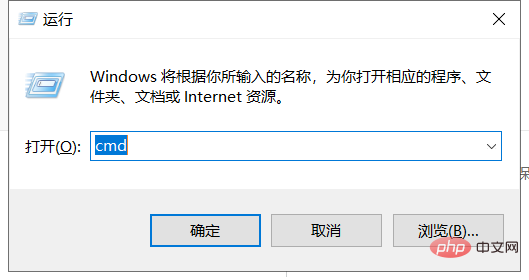
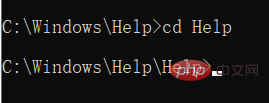
Among them, C:\User\***\ represents the current directory location (that is, the folder), and you can enter the command later.
2. Introduction to basic dos commands
Switch directory
cd Space the directory address to go to the folder you want to go to ( Absolute address)

# If you want to go to the folder under the current folder, you can use cd space folder name

If you want to change the drive letter, from drive C to drive D, you can directly enter D: to

View the folder contents
dir Space folder address, you can view the contents of the specified folder. If you do not add the folder address later, the content contained in the current folder will be viewed by default.
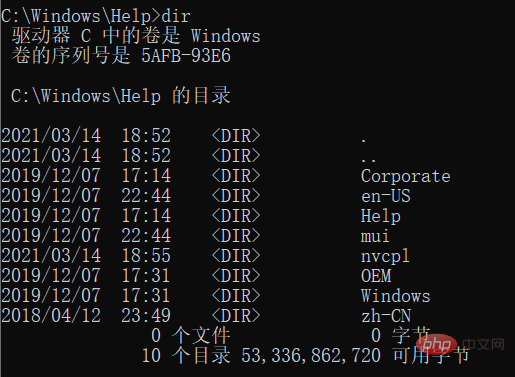
md command and rd command
are the abbreviations of make dictionary and remove dictionary, which are to create folders and delete folders. The syntax is the same.




ping command
ping space target ip (or url) that is You can check the network status between the local machine and the target.
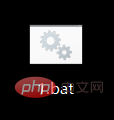
3. Batch file
If we need to execute multiple commands at once, we can write multiple commands in a text file, change the file suffix name to .bat, save it, and then execute the file, the computer will execute them one by one according to the order. Complete the command execution. For example:


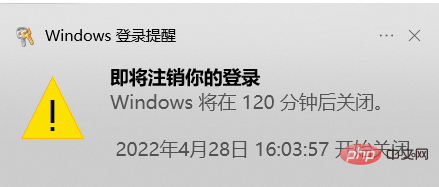

Then if we write this command to the batch file, the time will be changed to 2 minutes. And put this file into the self-starting folder of a friend's computer (friends who can afford to joke, be careful not to get beaten up, hahaha). What will happen? As soon as the other party turns on the computer, the file will be automatically executed, and the computer will prompt that the computer will automatically shut down in 2 minutes. If he doesn't know the dos command, I don't know how to cancel it. Then his computer is useless? Another friendly reminder: be careful of getting beaten!
Related recommendations: "Linux Video Tutorial"
The above is the detailed content of What are linux commands and dos commands. For more information, please follow other related articles on the PHP Chinese website!

Hot AI Tools

Undresser.AI Undress
AI-powered app for creating realistic nude photos

AI Clothes Remover
Online AI tool for removing clothes from photos.

Undress AI Tool
Undress images for free

Clothoff.io
AI clothes remover

Video Face Swap
Swap faces in any video effortlessly with our completely free AI face swap tool!

Hot Article

Hot Tools

Notepad++7.3.1
Easy-to-use and free code editor

SublimeText3 Chinese version
Chinese version, very easy to use

Zend Studio 13.0.1
Powerful PHP integrated development environment

Dreamweaver CS6
Visual web development tools

SublimeText3 Mac version
God-level code editing software (SublimeText3)

Hot Topics
 What computer configuration is required for vscode
Apr 15, 2025 pm 09:48 PM
What computer configuration is required for vscode
Apr 15, 2025 pm 09:48 PM
VS Code system requirements: Operating system: Windows 10 and above, macOS 10.12 and above, Linux distribution processor: minimum 1.6 GHz, recommended 2.0 GHz and above memory: minimum 512 MB, recommended 4 GB and above storage space: minimum 250 MB, recommended 1 GB and above other requirements: stable network connection, Xorg/Wayland (Linux)
 Linux Architecture: Unveiling the 5 Basic Components
Apr 20, 2025 am 12:04 AM
Linux Architecture: Unveiling the 5 Basic Components
Apr 20, 2025 am 12:04 AM
The five basic components of the Linux system are: 1. Kernel, 2. System library, 3. System utilities, 4. Graphical user interface, 5. Applications. The kernel manages hardware resources, the system library provides precompiled functions, system utilities are used for system management, the GUI provides visual interaction, and applications use these components to implement functions.
 vscode terminal usage tutorial
Apr 15, 2025 pm 10:09 PM
vscode terminal usage tutorial
Apr 15, 2025 pm 10:09 PM
vscode built-in terminal is a development tool that allows running commands and scripts within the editor to simplify the development process. How to use vscode terminal: Open the terminal with the shortcut key (Ctrl/Cmd). Enter a command or run the script. Use hotkeys (such as Ctrl L to clear the terminal). Change the working directory (such as the cd command). Advanced features include debug mode, automatic code snippet completion, and interactive command history.
 How to check the warehouse address of git
Apr 17, 2025 pm 01:54 PM
How to check the warehouse address of git
Apr 17, 2025 pm 01:54 PM
To view the Git repository address, perform the following steps: 1. Open the command line and navigate to the repository directory; 2. Run the "git remote -v" command; 3. View the repository name in the output and its corresponding address.
 Where to write code in vscode
Apr 15, 2025 pm 09:54 PM
Where to write code in vscode
Apr 15, 2025 pm 09:54 PM
Writing code in Visual Studio Code (VSCode) is simple and easy to use. Just install VSCode, create a project, select a language, create a file, write code, save and run it. The advantages of VSCode include cross-platform, free and open source, powerful features, rich extensions, and lightweight and fast.
 How to run java code in notepad
Apr 16, 2025 pm 07:39 PM
How to run java code in notepad
Apr 16, 2025 pm 07:39 PM
Although Notepad cannot run Java code directly, it can be achieved by using other tools: using the command line compiler (javac) to generate a bytecode file (filename.class). Use the Java interpreter (java) to interpret bytecode, execute the code, and output the result.
 What is the main purpose of Linux?
Apr 16, 2025 am 12:19 AM
What is the main purpose of Linux?
Apr 16, 2025 am 12:19 AM
The main uses of Linux include: 1. Server operating system, 2. Embedded system, 3. Desktop operating system, 4. Development and testing environment. Linux excels in these areas, providing stability, security and efficient development tools.
 How to run sublime after writing the code
Apr 16, 2025 am 08:51 AM
How to run sublime after writing the code
Apr 16, 2025 am 08:51 AM
There are six ways to run code in Sublime: through hotkeys, menus, build systems, command lines, set default build systems, and custom build commands, and run individual files/projects by right-clicking on projects/files. The build system availability depends on the installation of Sublime Text.





